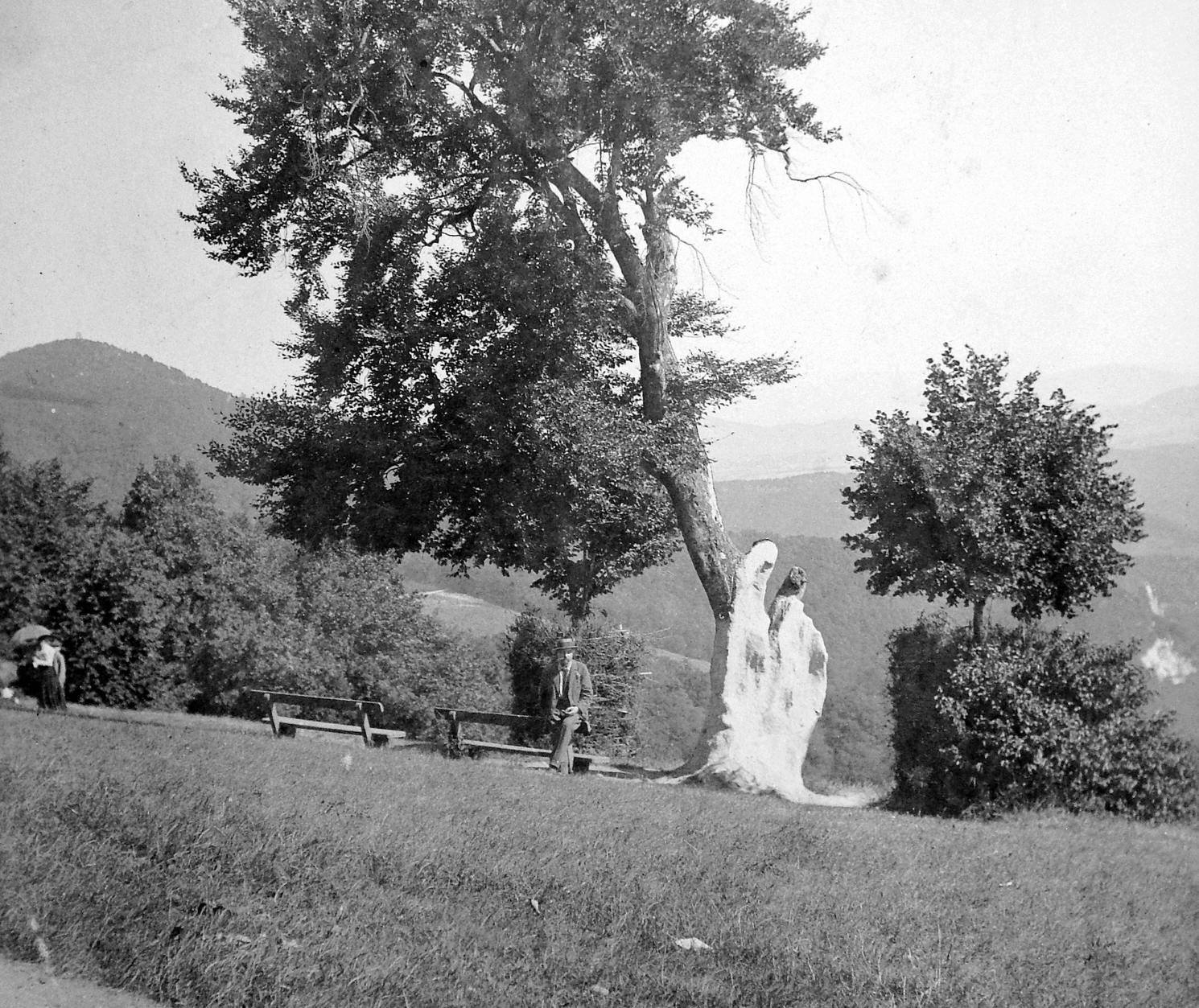The legend of Normafa, Budapest’s beloved destination to relax

If you have heard people from Budapest speak about ‘Normafa’ (Norma tree), you might picture a single tree somewhere and wonder why so many people want to see that tree. Actually, it is not a tree, it is a place. Well, it was an actual tree once, and that is why the name of the tree stuck and people just simply call this hill in Budapest the ‘Normafa’. But now, you can get to know more about this place and the tree it got named after.
First, a little bit more information about this place. ‘Normafa’ is on the Buda side of the Danube in District 12. It is part of the Buda Hills and is 477m high; there is also a lookout named after Sisi as it was said that she liked to visit that place due to how close it is to nature. ‘Normafa’ connects Svábhegy and János Hill with a long but narrow plateau. It is a beloved tourist destination as well as a very nice place to go hiking and to do other sports as, ever since winters in the 19th century, people come here to do some winter sports like skiing or going down the slope with sledges. It offers a beautiful panorama, although the once-forested area dotted with clearings was entirely green – now that view is somewhat obscured by the roofs of buildings at the foot of the hill.

“In the 19th century, ‘Normafa’ was a hunting ground where they hunted mainly foxes, partridges, snipes, and rabbits. The ancient right of the citizens of Buda was the ‘bear hunt of the 2nd February’. Although it was banned in 1855, they re-established this tradition in 1871, but by this time, due to the absence of bears, fun and drinking became the main feature of the event”, József Druzsin wrote in his book A Budai-hegység útikalauz (The Buda Hills Travel Guide).
The legendary tree
The ‘Normafa’, which the place got its name from, has a long history and even some legends around it. It was a ‘Fagus sylvatica’, which is the Latin name of the European or common beech. The old beech tree grew on the edge of the Normafa slope and, according to legends, the tree grew when the famous ‘Mátyás király’ (Matthias Corvinus) was born. There were many legends and tales that were about the king, and according to one of them, the king liked to rest in the shade of the tree, but unfortunately, there is no evidence that either story is true. Nonetheless, maybe the beech tree was not 500 years old, but it was certainly a couple of centuries old.
The origin of the name
According to Szeretlek Magyarország, the German-speaking inhabitant of ‘Svábhegy’ named the tree ‘Wetterbaum’, which means weather tree, but the Hungarians just called it ‘Viharbükk’ (~Thunderbeech), which I think is a much cooler name. The tree got this name because lightning struck the tree countless times during its lifespan as it was near the highest part of the area. The current name of the tree came later, but it is also connected to an interesting story.
The area was a popular destination for many people as early as the 19th century. It was especially popular among artists, poets, writers, and actors as well. It was not only a place away from the grime and clutter of the city but it also seemed to inspire whoever went there. Sándor Petőfi, for example, wrote his poem “A hegyek közt” (Between the Mountains) here, and Gusztáv Keleti immortalised the place in a picture.
You are probably curious now where the name ‘Normafa’ comes from. The artists of the Hungarian National Theatre often visited this place on non-working days, on the so-called ‘norma’ days. In 1840, Rozália Schódelné Klein, a famous opera singer of her time, a coloratura soprano, allegedly sang the grand aria of Bellini’s opera “Norma” under ‘Viharbükk’. The Casta Diva aria starts: “Virgin Goddess, who gilds these sacred old trees”, and from that point onward, the tree was called ‘Normafa’.
What happened to the tree?
The more-than-a-century-old tree which was literally weathered by the countless lightning bolts it had been struck by was still standing in the early 20th century. Unfortunately, however, on June 19th, 1927, a Sunday forenoon, a lightning bolt hit the tree for the last time. The capital wanted to preserve this legendary tree, so they decided to put its trunk in the basin of the Margaret Island artesian spring so that the limestone could preserve it forever. Sadly, they did not succeed in doing so.
According to Origo, in 1962, the capital planted a new beech tree in memory of the legendary old tree. Today, on the site of where the old tree was, there is a memorial plaque with a few lines of a poem by Gábor Devecseri.
„Norma tree,
Translation courtesy of Leslie A. Kery
Your branches have swung with the wind through the ages,
And cheery the songs were of ramblers around you,
Norma tree,
May songs come alive in the green of your verdure,
And conquer indifference, and conquer the storm.”
Source: Normafapark
If you would like to know more about the reserve or want to go for a hike there but would like some more information, you can visit Normafapark to find even more information about this beautiful place an arm’s reach from Budapest.
Source: Szeretlekmagyarország.hu, Origo.hu, Normafapark.hu, Daily News Hungary






Normafa is in district 12, not 22
Oh, yes. That was a typo, I corrected it.